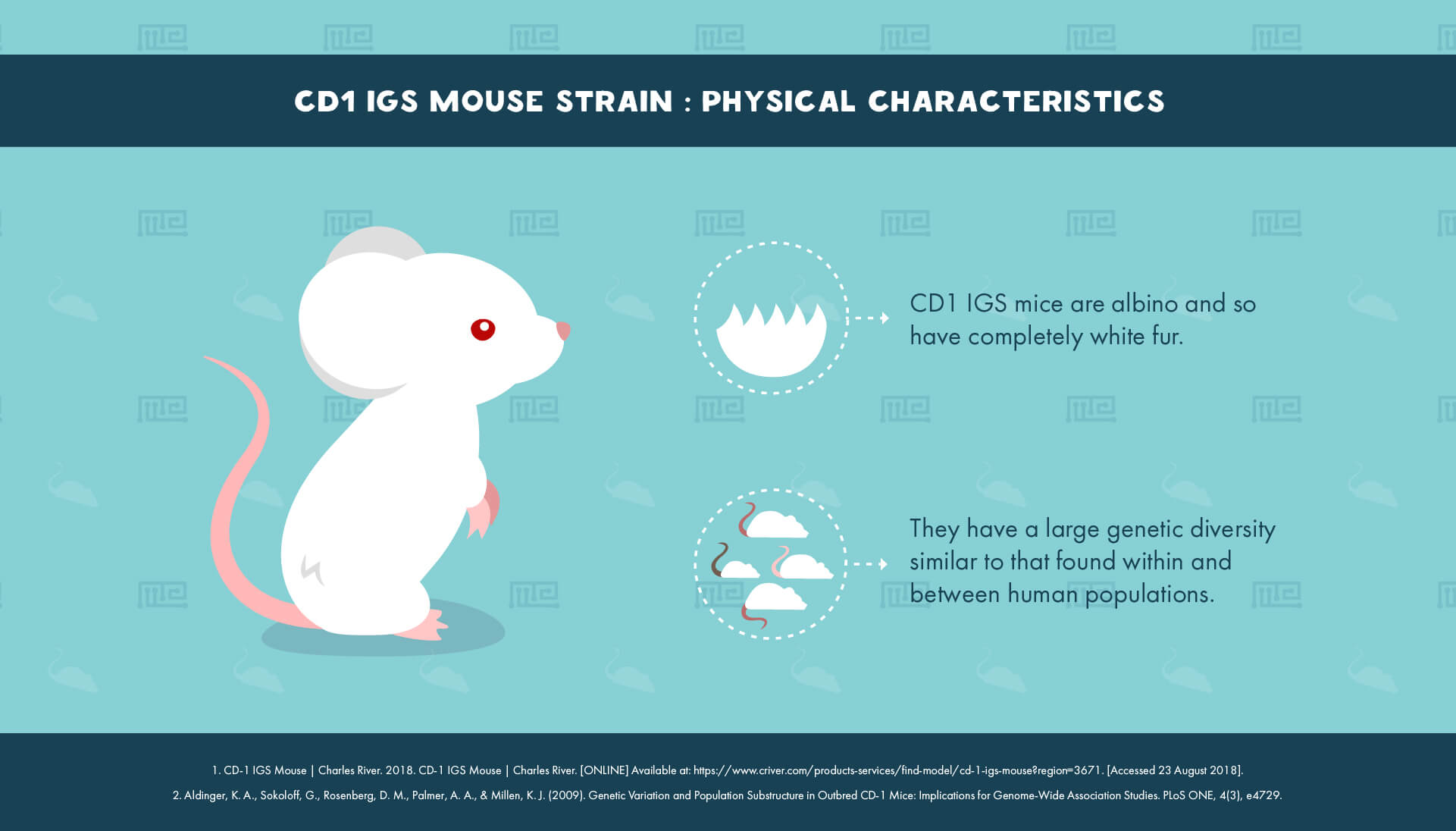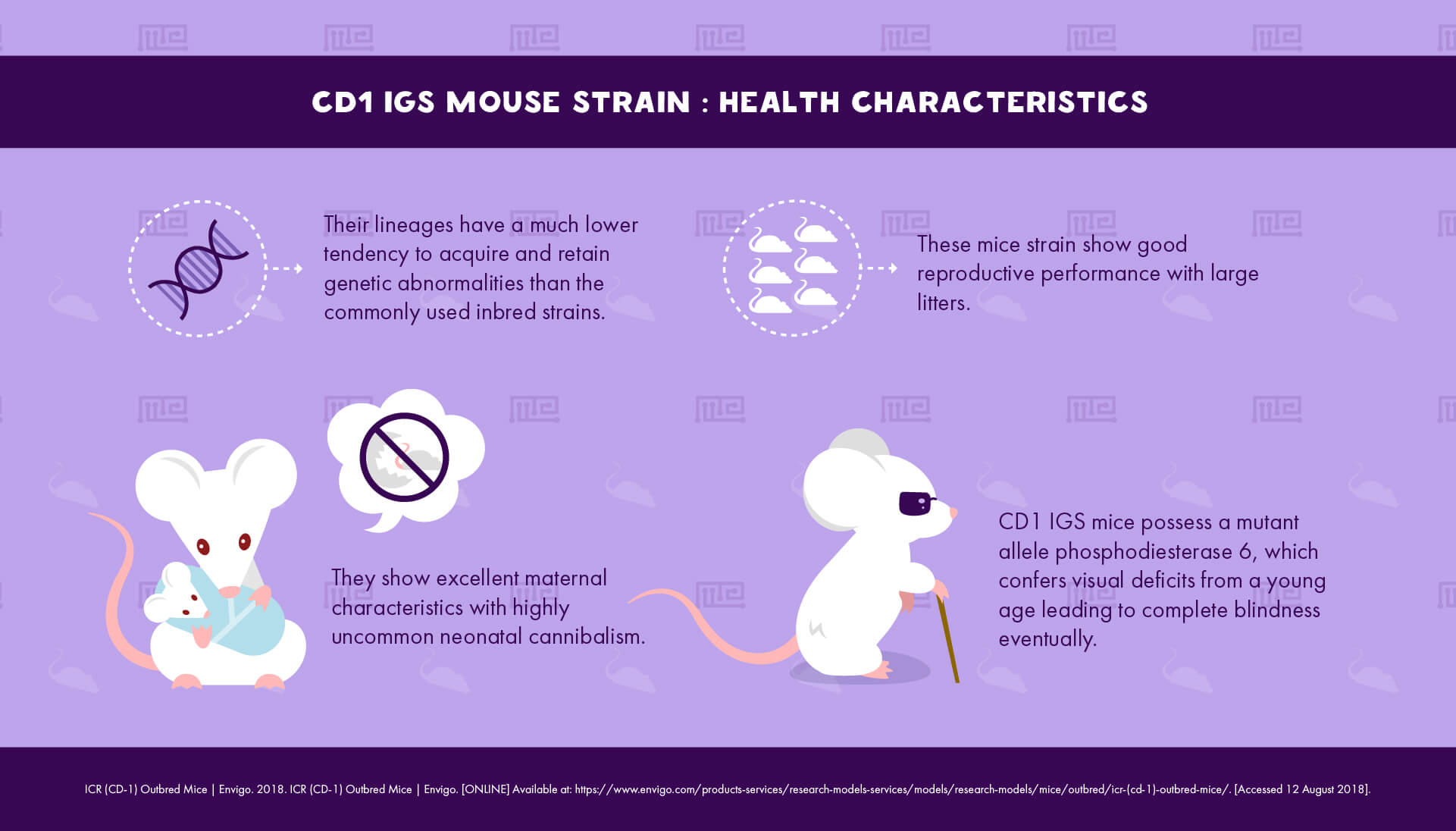Overview
CD1 IGS (also known as Crl:CD1(ICR)) is an albino outbred strain of mouse model that has frequently been used in toxicology and pharmacological research. It is the most popular strain of outbred mouse.
History
The initial stock of outbred mice from which this strain derives were bred at the Anti-cancer Centre (hence ICR) in Lausanne, Switzerland, in the 1920s. They were imported to the US in 1926 by the Rockefeller Institute, and then to the Institute for Cancer Research in Philadelphia 1948.[1]
It was at the ICR that the Ha/ICR stock was developed. Animals of this stock passed to the Roswell Park Memorial Institute in the 1950s (where they were termed HaM/ICR), and then finally to Charles River laboratories in 1959. The current CD1 IGS strain derives from HaM/ICR and is bred at Charles River (IGS stands for International Genetic Standardisation).[1]
Need mazes for your research?
Behavioral Characteristics & Handling
CD1 IGS mice have been described as “docile”,[3] “gentle”[4] and “fairly docile and easy to handle”.[5] While detailed data on the ease of handling of this strain could not be found, these descriptions strongly suggest that CD1 IGS is a strain that displays minimal evasion, struggling and aggressive behavior when caught and held.
In one study published in 2014, CD1 IGS mice spent slightly less time in the open arms of an elevated plus maze than both the BALB/c and C57BL/6 strains, suggesting it may display more anxiety than these strains.[6]
CD1 IGS mice perform worse in the T maze test and Barnes maze than C57BL/6J, although they perform better than this inbred strain in the Morris water maze.[7] On balance then, it appears the CD1 IGS may have deficits in spatial learning and memory, but the results are not entirely consistent.
Health Characteristics
Given the outbred nature of CD1 IGS mice, their lineages have a much lower tendency to acquire and retain genetic abnormalities conferring serious illness than the commonly used inbred strains.
The strain has a good reproductive performance with large litters, and their maternal characteristics have been described as excellent, with neonatal cannibalism highly infrequent.[3]
As with many popular strains, CD1 IGS mice possess a mutant allele phosphodiesterase 6, which confers visual deficits from a young age, and eventually complete blindness.[3]
Major Experimental Uses
CD1 IGS mice are frequently used in research on toxicology, immunology, ageing, and genetics.[1]
While inbred mice have a more uniform genotype, which allows for easier and more reliable interpretation of results, this uniformity does not reflect the genetic diversity of the general human population. This had lead some to suggest that outbred mice such as CD1 IGS may have an advantage over the more commonly used inbred strains in behavioral research.[8]
One study reports that CD1 IGS proved just as suitable as the most popular inbred strain, C57BL/6J, for assessing social behavior. Although, the experimenters concede that obtaining statistically significant data with the CD1 IGS mice is more difficult.[8]
References
- CD-1 IGS Mouse | Charles River. 2018. CD-1 IGS Mouse | Charles River. [ONLINE] Available at: https://www.criver.com/products-services/find-model/cd-1-igs-mouse?region=3671. [Accessed 23 August 2018].
- Aldinger, K. A., Sokoloff, G., Rosenberg, D. M., Palmer, A. A., & Millen, K. J. (2009). Genetic Variation and Population Substructure in Outbred CD-1 Mice: Implications for Genome-Wide Association Studies. PLoS ONE, 4(3), e4729.
- ICR (CD-1) Outbred Mice | Envigo. 2018. ICR (CD-1) Outbred Mice | Envigo. [ONLINE] Available at: https://www.envigo.com/products-services/research-models-services/models/research-models/mice/outbred/icr-(cd-1)-outbred-mice/. [Accessed 12 August 2018].
- Research Models and Services. Charles River. [ONLINE] Available at: https://www.crj.co.jp/cms/cmsrs/pdf/product/2016_RMS_CRJ-Catalog_English.pdf. [Accessed 13 August 2018].
- ICR(CD1). Harlan [ONLINE]. Available at: https://animals.ekmd.huji.ac.il/He/home/animalOrder/Documents/ICR.pdf. [Accessed 13 August 2018].
- Arabo, A., Potier, C., Ollivier, G., Lorivel, T., & Roy, V. (2014). Temporal analysis of free exploration of an elevated plus-maze in mice. Journal of Experimental Psychology: Animal Learning and Cognition, 40(4), 457-466.
- Patil SS, Sunyer B, Höger H, Lubec G. Evaluation of spatial memory of C57BL/6J and CD1 mice in the Barnes maze, the Multiple T-maze and in the Morris water maze. Behav Brain Res. 2009 Mar 2;198(1):58-68.
- Hsieh, L. S., Wen, J. H., Miyares, L., Lombroso, P. J., & Bordey, A. (2017). Outbred CD1 mice are as suitable as inbred C57BL/6J mice in performing social tasks. Neuroscience Letters, 637, 142–147.


